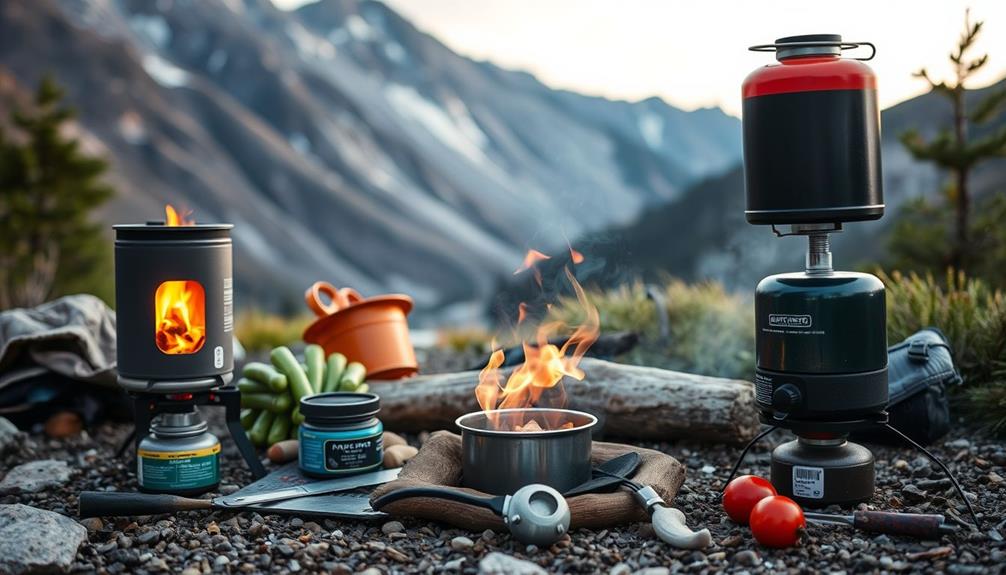Floods are a major concern in the United States. They cause more harm than other severe weather events. They pose a great risk to both lives and property.
Being prepared is crucial when a flood hits. You need to act fast to keep you and your family safe. Knowing what to do is key to surviving a flood emergency1.
Key Takeaways:
- Stay informed about flood survival tactics and strategies to mitigate risks.
- Be aware of your flood risk based on your location and FEMA flood maps.
- Prepare an emergency kit with essential supplies to last at least a week.
- Take steps to protect your home, such as using sandbags and cleaning gutters.
- Avoid floodwaters and low-lying areas, as they can be filled with debris and present dangers.
Understanding Floods
Floods are natural disasters that cause huge harm and risk lives and property2. They happen because of heavy rains, sudden floods, or when water control structures break. Floods can happen in places like valleys, plains, and near water bodies3.
Flash flooding is very dangerous because of its power and rapid water rise2. These floods happen quickly and are extremely risky2. Every year, they cause lots of deaths and damage to properties.
Flash flooding is highlighted as the most dangerous type of flooding due to the sheer force and volume of flowing water that can accumulate.
Many drownings happen when cars are driven into floods2. Trying to cross flooded roads is very risky2. Just six inches of water can knock a person down. Also, a foot of water can carry away a car, showing how strong floods are3.
Knowing how different water levels affect cars is crucial during floods2. This information helps people make safe choices and avoid danger.
Buildings in floodwaters are hazardous because they can be weak2. It’s wise to avoid these buildings for safety2. Also, remember that help from emergency services might be limited during floods.
Advice to stay out of buildings surrounded by floodwaters due to potential hazards from weakened foundations and hidden damage.
To get ready for floods, have an emergency kit ready2. It should have food, water, medicine, batteries, blankets, and a first aid kit. A full list of emergency kit items can help you prepare for floods.
Flood Statistics:
| Statistic | Description |
|---|---|
| Approximately 75% of all Presidential disaster declarations in the United States are associated with flooding | Highlights the significant impact and frequency of floods in the United States2 |
| Each year, more deaths occur due to flooding than from any other thunderstorm-related hazard | Emphasizes the deadly nature of floods and the importance of preparedness2 |
| Half of all flood-related drownings happen when a vehicle is driven into hazardous floodwater | Underscores the dangers of driving through flooded areas and the importance of avoiding such situations2 |
| It is mentioned that six inches of moving water can sweep someone off their feet, emphasizing the force of water in floods | Highlights the power and danger of floodwaters2 |
The statistics above show how serious floods are and the dangers they bring. It’s important to understand floods well to be better prepared and reduce damage.
Before a Flood
Being ready before a flood is key for your safety. Being aware of flood safety rules and getting ready helps lower risks.
Keep up with flood warnings. Know the difference between a flood watch and a flood warning. A flood watch means flooding could happen, while a flood warning means it’s happening or will soon. Listen carefully to these warnings and protect yourself and your family.
Building an emergency kit is a key flood prep step. Include things like food that doesn’t spoil, water, flashlights, extra batteries, a first aid kit, and important papers like ID and insurance. Having these essentials can make a big difference in an emergency.
Make sure your drains are clear. Blocked drains and gutters increase flooding and damage risk when it rains a lot. Check and clean your drains to keep water flowing properly.
Statistical data: Just six inches of moving water can make you fall. Flooding can happen even in places that aren’t expected to flood4. Also, one foot of water can float many cars, and two feet of moving water can take away most vehicles, including big ones like SUVs and trucks4.
Statistical data: It’s very important to know that flood water can have harmful things like sewage and germs that make you sick4. So, avoiding flood water is a major safety step. Also, if you have flood insurance, taking pictures of any damage is important. This helps make sure you get paid for your losses4.
During a Flood
If your area gets a flood warning, move to higher ground right away. Make your home safe by moving outdoor things inside and putting important stuff upstairs. If told, turn off gas and electricity, and try not to walk in moving water.
If you have to drive, stay away from flooded roads. If your car gets caught in rising water, leave it5.
After a Flood
After a flood, keeping safe is top priority. Protect yourself and your loved ones. Here are key steps to follow:
1. Listen to Authorities and Follow Instructions
Keep up with local news and follow any updates. Officials will let you know if it’s safe or if you need to leave6.
2. Avoid Floodwaters
Never try to walk or drive through floodwater. It could be full of dangerous chemicals or objects. Even shallow water can be strong and risky7.
3. Be Cautious of Damaged Structures
Be careful around damaged roads and buildings. When going back into buildings, be on the lookout for any damage. Do not enter buildings that seem unsafe. Report them instead8.
4. Stay Away from Power Lines
Stay clear of any fallen power lines. They could still be live and dangerous. If you see one, keep your distance and contact the power company6.
5. Clean and Disinfect
Clean your home if it was in the flood. Floodwater can bring germs and pollutants. Use the right cleaners to make sure everything is safe again7.
6. Document Damages for Insurance Claims
Take pictures or videos of flood damage for insurance. It’s important for your claim. Reach out to your insurance agent quickly to start the claim process8.

Remember, safety first after a flood. By following these steps, you can stay safe and start fixing and getting back to normal.
Knowing Your Risk and Getting Insurance
To keep your home safe from floods, it’s key to know your risk and get the right insurance9.
Floods happen in all U.S. states, as the most common natural disaster. Coastal areas have a higher flood risk during hurricane season from June to November. The Midwest sees more floods in spring and summer9.
In the Northeast and Northwest, spring ice jams can cause floods. The Southwest faces floods in late summer’s monsoon season9.
Floodwaters may go away slowly over months or quickly in days. Flash floods can surprise cities, with little warning. Hurricane storm-tide surges can rise up to 35 feet9.
Even just a bit of floodwater can cause huge and costly damage. Over 25% of flood claims come from outside high-risk areas. So, everyone needs good flood insurance9.
Regular home insurance doesn’t cover floods. You must buy flood insurance separately. You can choose from FEMA’s NFIP or private insurers9.
There’s a 30-day wait for flood insurance to start. Get it well before flood risks. Costs vary based on how likely floods are in your area910.
Use FEMA’s flood map to know your risk. It helps in planning ways to stay safe10.
The right insurance can give you peace of mind during floods. Always check your policy matches your flood risk and covers everything important910.

Knowing your flood risk and getting insured helps avoid big losses. Be ready, protect your home and live with less worry.
Evacuation Preparedness
Getting ready for a flood means knowing how to leave safely, having emergency supplies, and keeping valuables protected. These steps are key to being safe and reducing damage. Preparing well can really help during these stressful times.
Know the Evacuation Orders
Floods make things dangerous fast, and officials might tell people to leave to keep them safe. It’s important to know the way out and when it’s time to go. Floods happen a lot in the U.S. Just 6 inches of water can make you fall, and one foot of water can carry a car away11.
Emergency Supplies
Having enough supplies is a must when flooding happens. You should have what you need for at least a week. This means 1 gallon of water per day for each person for drinking and cooking, for three days 12. Also, have food like canned goods that don’t need cooking, and snacks like peanut butter and crackers12.
Staying in touch during a flood is also key. Make sure you have a radio that works on batteries and extra batteries too, to keep up with news even if there’s no power12.
Moving Valuables to Higher Ground
Water from floods can really damage things, especially if they mean a lot to you. Moving things up high can save them from water damage11. This helps keep important and special things safe from harm.
Secure Important Documents
Safekeeping for your important papers is a must too. Put papers like birth certificates and insurance info in a box that water can’t get into. This keeps them dry and safe when there’s a flood13.
Being ready for a flood means knowing the right steps to take. This includes evacuating when told, having supplies ready, and protecting your things. By knowing what to do and staying up to date, you’re more prepared for flood emergencies.

Essential Supplies for Evacuation Preparedness
| Emergency Supplies | Quantity |
|---|---|
| Water (1 gallon per person per day) | At least 3-day supply |
| Canned foods and non-perishable items | At least 3-day supply |
| Battery-powered radio | With extra batteries |
| Emergency first aid kit | One per household |
| Flashlights | With extra batteries |
| Copies of important documents | Readily available |
Don’t forget other needs like clothes, warm blankets, hygiene stuff, and any important medicine13. Having these items ready can make a big difference in your comfort and safety. Follow local advice to ensure the best actions are taken for safety.
Staying Safe During a Flood
During a flood, it’s important to take safety seriously to protect you and your family. Following guidelines helps you understand dangers and lower flood risks.
Avoid Walking or Driving Through Floodwaters
Stay away from floodwaters when walking or driving. The water can hide powerful currents and debris that are dangerous. Only six inches of moving water can knock you over143. And cars can be carried away in just two feet of water14.
Stay on Higher Ground
Stay safe by keeping to higher ground during floods. Stay away from low-lying areas that flood easily. If you’re in a flood-prone area141, seek shelter or move to a higher place if needed.
Avoid Bridges Over Running Water
Avoid bridges over running water in a flood. The force of the water may weaken the bridge and increase the danger. Use higher ground routes instead to stay safe3.
Move to the Highest Level
If trapped in a building, go to the highest level. Don’t enter closed attics because you might get trapped there during the flood3. Stay alert and wait for rescue if needed.
Follow these safety tips to improve your chances of staying safe in a flood. Always put safety first for you and your loved ones. Call 9-1-1 for emergencies like gas leaks or downed power lines. For shelter info or other disaster help, call 2-1-114.
Important Flood Safety Tips
Keeping safe during a flood involves a few key steps. Use sandbags, clear your gutters, and know potential dangers. These actions greatly reduce flood risks.
Firstly, sandbags are vital for flood defense. They can block floodwaters from entering your home if placed correctly. It’s key to ensure they’re well-stacked to create a strong barrier. This technique is effective in protecting your property15.
Another critical step is to maintain your gutters. Clean gutters prevent water blockages, allowing rain to flow freely. If gutters clog, water may overflow and harm your home’s structure. Regular maintenance diverts water away, reducing indoor flooding risks15.
Knowing how to shut off your utilities is also important. Locate and understand how to turn off gas, electricity, and water. This can prevent electrocution, gas leaks, and damage during a flood16.
By understanding these safety tips, you can protect yourself and your family in a flood. Effective use of sandbags, gutter maintenance, and utility management are key proactive steps. These actions minimize flooding’s impact and enhance safety1516.

| Flood Safety Tips | Reference |
|---|---|
| Nearly half of all flash flood fatalities are vehicle-related | 1 |
| Two feet of fast-moving flood water can float a car, and water moving at two miles per hour can sweep cars off a road or bridge | 1 |
| Two feet of water can carry away most cars | 1 |
| As little as six inches of water may cause a driver to lose control of the vehicle | 1 |
| In 1993, many levees failed along the Mississippi River, resulting in devastating floods | 2 |
| In 1889, a dam break upstream from Johnstown, Pennsylvania, released a 30-40 foot wall of water that killed 2200 people within minutes | 2 |
| The city of New Orleans experienced massive devastating flooding days after Hurricane Katrina in 2005 due to the failure of levees designed to protect the city | 2 |
| On average, 94 people in the U.S. die every year in flood waters. Nearly half of those deaths occur in vehicles trying to cross submerged roads | 3 |
| It takes a mere 6 inches of swift moving water to knock a person off their feet | 3 |
| Water can carry away most vehicles once fast-moving water reaches 1 foot deep | 3 |
| Within three minutes, the water level inside a car can rise from the feet up to the hips during a flash flood | 3 |
| Practice defensive swimming by keeping your feet up to avoid getting stuck or pulled underwater | 3 |
Understanding Flood Warnings
To get ready for a flood, knowing about different types of flood warnings is key. These warnings give useful details on possible flood situations near you.
A flood watch means flash flooding might happen in your area. Though flooding hasn’t occurred yet, the conditions are right for it. This warning covers many counties, alerting people and officials to get ready. Keep an eye on weather updates and be prepared to act if needed. [17]
A flood warning is more critical. It says flooding is happening or will happen soon. This message focuses on a smaller area, signaling it’s time to act fast to keep safe. Follow any orders to leave and don’t drive on flooded roads; it’s very risky and causes many deaths during floods. [17][18]
When a flood emergency is claimed, it’s very serious. It means a flash flood is about to happen, threatening lives and causing huge damage. Act immediately in a flood emergency, listening closely to what local leaders say. [19]
It’s vital to know the difference between a flood watch and warning. A watch means get ready and stay alert. But a warning needs you to act quickly to stay safe. By being alert to flood warnings, you can prepare better and remain safe.

| Type of Warning | Description |
|---|---|
| Flood Watch | Indicates that conditions are favorable for flash flooding to occur. Be prepared and stay informed. |
| Flood Warning | Issued when flooding is occurring or is imminent. Take immediate action to protect yourself and your property. |
| Flood Emergency | Declared in rare and extreme situations where there is an imminent threat to human, life, and catastrophic damage is expected. |
Finally, being informed about flood warnings can keep you and others safe. By knowing what to do when there’s a watch or warning, you’re ready to handle the situation. Always listen to local authority advice and care for your and others’ safety.
Evacuation Procedures
When you hear about a mandatory evacuation, it’s vital to act fast and follow local authority guidance. Not leaving can lead to severe harm or even death3. Make sure you and your family are safe by listening to evacuation orders.
Get to know your area’s evacuation routes before a flood hits. Look at different ways to leave in case some are blocked. This planning helps make leaving quicker and less stressful3. Keep a map of these routes handy, like in your emergency kit or on your phone.
If you decide to stay during an evacuation, help might not reach you. Floodwaters can rise quickly and are very dangerous. It’s very important to put your and your family’s safety first by evacuating3.
Where you should evacuate to can change based on where you are and how bad the flood is. Local officials will let you know the safest way to go. Always keep up with local news and emergency updates for the latest evacuation info3.
Try to leave during the day when you can see better. Make sure everyone is together and has what they need before you go. Don’t forget to pack crucial things like medicine, important papers, and I.D.s3.
While evacuating, you might see roadblocks or barricades by emergency teams. These are there to keep you safe and guide you away from danger. It’s crucial to follow these directions and not go around the barricades3.
| Evacuation Procedure Tips |
|---|
| Follow evacuation orders issued by local authorities. |
| Familiarize yourself with evacuation routes in your area. |
| Ensure your emergency preparedness kit is stocked and easily accessible. |
| Stay tuned to local news and emergency alerts for the latest information. |
| Evacuate during daylight hours if possible. |
| Pack essential items, including medications and important documents. |
| Obey barricades and road closures set up by local responders. |

Evacuation steps are key to staying safe during floods. Follow orders, know your escape routes, and listen to local authorities to keep safe. By being prepared and putting safety first, you can better survive floods and avoid dangers3.
Essential Supplies for Emergencies
Being prepared for emergencies is key to staying safe. It’s unexpected when disasters will hit. This leaves many without necessities. Therefore, stocking up on emergency supplies is vital. Key items include food, water, batteries, and flashlights.

About half of Americans need daily medication20. This shows the importance of having these meds in your emergency kit. Don’t forget eyeglasses and contact lens solution too. They’re crucial for those needing them to see clearly in emergencies.
Everyone should have at least one gallon of water per day for a few days20. Water is a must-have in emergencies. Also, stock up on non-perishable foods to last several days20. These supplies can be lifesavers if you’re stuck at home or need to leave quickly.
Money is also vital in emergencies. Include cash or traveler’s checks in your kit20. They can help when you can’t use credit cards.
Only 34% of Americans have emergency kits ready21. This points out a lack of preparedness. But more Americans are taking steps to prepare. In 2020, 68% followed FEMA’s suggested actions21.
Adding other essentials to your kit is advised. The New York Times suggests building your kit to fit personal needs21. This way, it meets your specific requirements.
FEMA recommends having 72 hours of food per person21. Also, remember baby food if needed. Include flashlights, a whistle, and dust masks. Don’t forget local maps, a can opener, and a radio. Kids’ toys, pet items, and tools like a wrench should be in there too21. These help ensure everyone’s safety during a disaster.
Keep a smaller kit in your car or somewhere easy to grab22. Check your kit yearly to replace old items22. Being prepared means you’re ready to protect yourself and your family anytime.
For detailed disaster preparedness tips, check Ready.gov22.
Protecting Valuables
When a flood is coming, it’s key to protect your valuables, those with sentimental and monetary worth. Follow some simple steps to keep your things safe. This way, you can cut down the risk of damage and loss.
Moving Valuables: Start by moving valuable items to higher places or a safe spot. Artwork, family heirlooms, and jewelry should go to areas less likely to flood. Moving them up keeps them safe from water harm.
Storing Documents: Keep important papers like passports and legal documents in a secure, waterproof box. This safeguards them from water damage. Make sure the box is somewhere easy to get to and that everyone in the house knows where it is, in case you need to leave quickly.
Waterproof Containers: Use containers that water can’t get into, made from plastic, metal, or rubber, for storing valuables and documents. These containers protect against water and keep what’s inside safe during floods. Make sure they’re sealed well to keep water out.
By taking these actions, you greatly cut down the chance of damage to your important items during a flood. Never overlook the need to protect your valuables, for their sentimental and monetary value.

References:
Post-Flood Safety Measures
After a flood, your safety comes first. There are important safety steps to consider. Floodwaters might be contaminated24, posing health risks. Electrical safety is also key24. Be careful when going into buildings and checking for unseen damage24. Following these guidelines helps keep you and your loved ones safe after a flood.

It’s crucial to avoid contact with floodwaters24. Most deaths during floods happen when people try to cross flooded areas24. Even a foot of water can move a 1500-pound car, and two feet of water can carry away most vehicles24. Six inches of fast water can make you fall, and two feet of water will float a car24. These facts show the power and risk of floodwaters, stressing the need for caution.
Be careful entering flood-damaged buildings. Nighttime increases the risk of accidents24. It’s harder to see water hazards in the dark24. Having good lighting and being extra cautious can help avoid dangers.
Checking buildings for damage after a flood is key. Water can secretly damage structures24. Hidden damage can make buildings unsafe24. It’s smart to get a professional’s help to make sure buildings are safe.
Remember, taking steps for safety after a flood is very important. Stay away from dirty floodwaters, be aware of electrical safety, and check buildings carefully for damage. By doing this, you can stay safe and recover well after a flood.
Note: Ensure to contact professionals and experts in water safety, electrical safety, and building inspections to obtain comprehensive advice tailored to your specific needs and circumstances.
Importance of Flood Insurance
Flood insurance is key for complete home coverage. While most home policies cover many dangers, they often exclude floods. Knowing this and getting flood insurance helps protect homes and money against flood damage.
Floods can strike anywhere in the U.S25, not just flood-prone areas. So, Ready.gov calls floods the nation’s most frequent natural disaster. This fact means all homeowners, regardless of their area’s risk level, should think about flood insurance to protect their homes and belongings.)>
Understanding flood risk is vital, and FEMA flood maps are tools that help. These maps show flood zones and are useful for homeowners, insurers, and communities. By using these maps, you can see your flood risk and choose the right flood insurance. Getting enough coverage is a smart financial move.
Some people think federal disaster help will cover all flood losses. Yet, this help often comes as loans that must be repaid. Relying on just federal aid leaves people in debt and financial trouble. Flood insurance provides better protection and helps with faster recovery with less financial stress.
The National Flood Insurance Program (NFIP) covers over five million people in the U.S. It offers almost $1.3 trillion in protection for buildings and contents. With NFIP insurance, people can lessen the impact of floods and bounce back faster26.
About 20% of flood insurance claims are from areas thought to be at lower risk. Premiums in higher-risk zones are usually higher, but the insurance is worth it. Even a small amount of floodwater can cause huge damages, making flood insurance critical2527.
Remember, there’s usually a 30-day wait to start flood insurance coverage. So, getting your policy early, before flood threats emerge, is smart. This action ensures you’re ready financially and brings peace of mind about protecting your property.
Flood insurance does more than protect homes; it also strengthens communities. By lowering disaster impacts, it helps areas bounce back quicker. This makes neighborhoods more stable and resilient against future floods.
In summary, it’s crucial for homeowners to know the limits of regular home insurance and the value of flood insurance. By checking FEMA flood maps, understanding risks, and getting suitable coverage, you can safeguard your home, finances, and comfort. Flood insurance is essential for risk management and keeping financially secure against floods.
Conclusion
To stay safe in floods, knowing how to survive is key. It’s vital to understand floods and take the right steps to reduce risks. For example, the big flood in Northland in July 202028 showed us how crucial it is to be ready.
When floods hit, your first move should be getting to somewhere high. Avoid floodwater at all costs28. The government suggests being proactive to keep you and your home safe. This means getting flood insurance since it’s a big help after floods28. Knowing the dangers, like flash floods or landslides, helps you make smart choices when evacuating.
People working on flood safety need to watch out for injuries and health risks. Things like hurting your back or getting sick from floodwater29 are risks. By following safety tips and community advice, we can respond better to floods.
Even though we can’t stop floods, being ready helps us stay safer. Thinking about safety, knowing the flood risks, and having a plan with supplies are important28. Let’s all help keep our communities and each other safe in floods.
FAQ
What are flood survival tactics?
What causes floods?
How can I prepare before a flood?
What should I do during a flood?
What should I do after a flood?
How can I determine my flood risk and get insurance?
What should I do to prepare for evacuation?
How can I stay safe during a flood?
What flood safety tips should I follow?
What is the difference between a flood watch and a flood warning?
What should I do during an evacuation?
What are essential supplies for emergencies?
How can I protect my valuables during a flood?
What safety measures should I take after a flood?
Why is flood insurance important?
How can I stay safe during floods?
Are there any tactics from surviving civil unrest that can also be applied to surviving a flood?
During a flood, it’s essential to have a plan and to stay informed. Similarly, essential tips for navigating civil unrest include having an emergency plan and staying updated on the situation. Both situations require staying calm, finding safe shelter, and being prepared to adapt to changing circumstances.
Source Links
- 10 Flood Safety Tips for How to Prepare and Make It Through
- How to Survive a Flood: Flood Safety Tips
- Floods | Ready.gov
- Safety Tips: Before, During and After a Flood – Pinellas County
- 5 Ways to Survive a Flood – wikiHow
- Safety Tips for Flooding
- What To Do Before, During, and After a Flood | Patterson, CA
- I Survived a Flood, This is What I Wish I Had Known – Team Rubicon
- How to Prepare for a Flood
- Surviving Floods: Flood Preparation Tips To Ensure Flood Survival
- BE PREPARED FOR A FLOOD
- Disaster Preparedness Tips
- Flood Safety Tips
- Flood Safety Tips
- 3 life-saving tactics to use if in a car during a flash flood
- Flash Flood Warning Safety Tips and Guidelines
- The City of Tallahassee
- Severe Weather Awareness – Flood Safety
- Build A Kit | Ready.gov
- Emergency Essentials: Tips for Assembling a Survival Kit
- 10 Items to Include in Your Emergency Kit
- Protect Your Home from Flooding Low-cost Projects You Can Do Yourself
- Flash Flood Safety Tips | Shelby County, AL
- Flood survival tips – Insure.com
- | Why Businesses Need Flood Insurance
- Safeguard V: Understanding Flood Insurance
- Learning from Floods—How a Community Develops Future Resilience
- Flood Preparedness and Response – Response/Recovery










